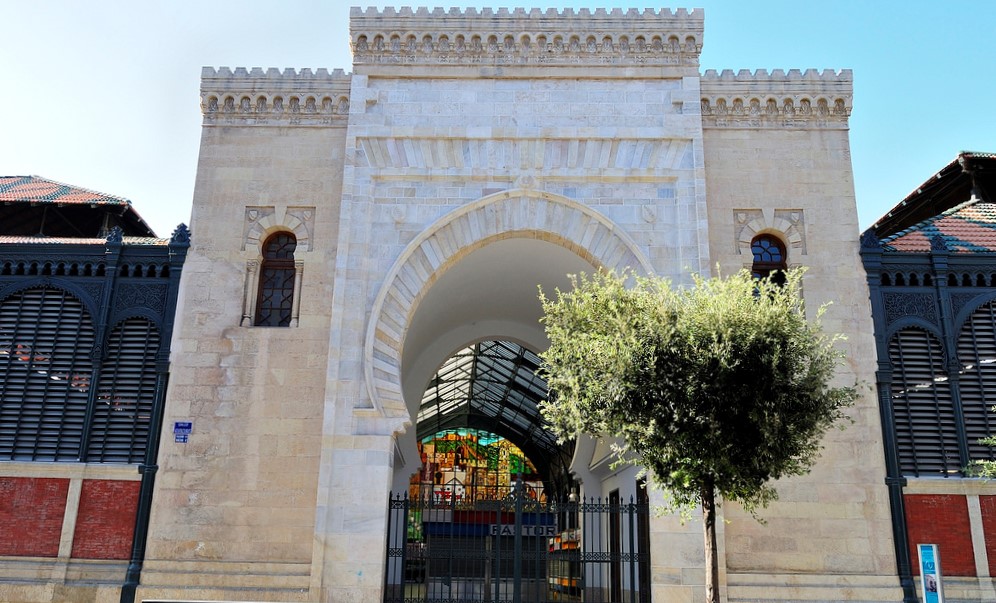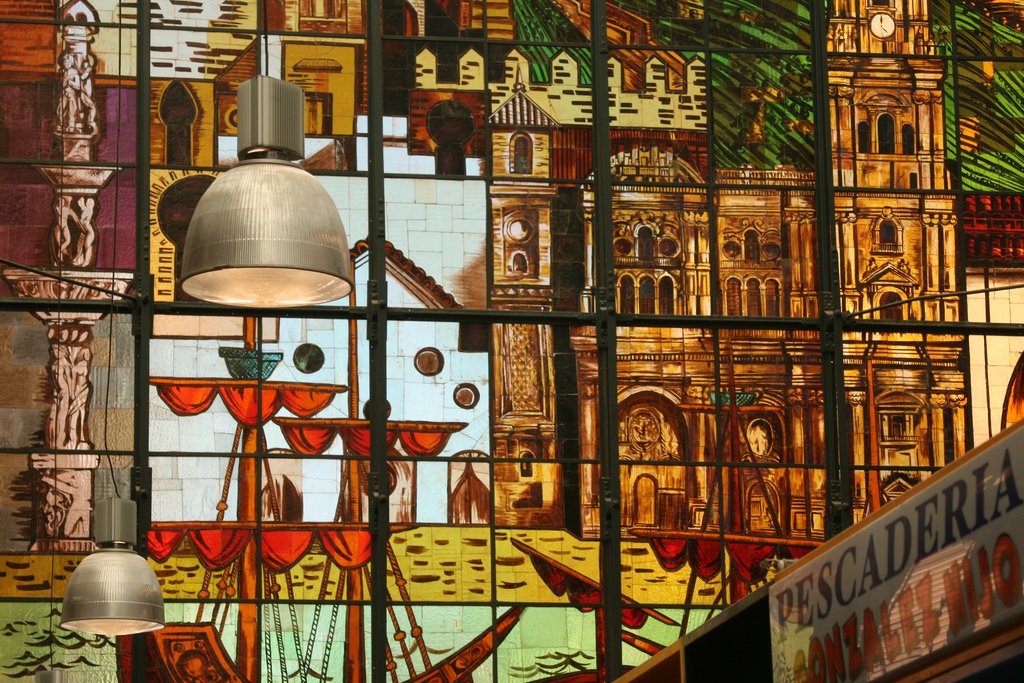From Arab shipyard to convent: the fascinating history of Atarazanas market

Today, Atarazanas is known as Malaga’s central market – a bustling marketplace and a major hub of activity in Malaga city centre.
However, this vibrant food market boasts a remarkable history that spans seven centuries, reflecting the city’s evolving landscape and culture.
The original Atarazanas: a 14th-century Arab shipyard
When Atarazanas was first built in the 14th century, Malaga looked vastly different from the city we know today.
At that time, areas that are now iconic landmarks, such as Paseo del Parque and Muelle Uno, lay beneath the sea. The shoreline reached right up to where the market stands today, making this location ideal for its original purpose: a shipyard.
The name “Atarazanas” comes from the Arabic word for shipyard, reflecting the building’s Moorish origins.
The impressive entrance to today’s food market is actually a remnant from this era. The massive white horseshoe arch had to be large enough for ships to pass through during construction and repairs.

This stunning archway, located at the main entrance on Calle Atarazanas, is the only surviving element of the original 14th-century structure.
At its peak, the complex featured seven such arches, all built in distinctive Moorish architectural style.
From shipyard to convent: the Christian Reconquest era
The building served as a functional shipyard until 1487, when the surrounding area was gradually reclaimed from the sea. This period also marked a pivotal moment in Malaga’s history… the Christian Reconquest.
After the Catholic Monarchs successfully overthrew the Arab regime in Malaga, they repurposed the former shipyard into a convent.
However, this religious function was short-lived. Over subsequent years, the building underwent several transformations, serving as a weapons storage facility, a military hospital and a medical school.
Each incarnation reflected the changing needs and priorities of the city’s new rulers.
The 19th-century rebuild: creating a modern market
By the end of the 19th century, the original Moorish structure had fallen into disrepair and abandonment
Meanwhile, Malaga faced a growing urban challenge: street vendors selling food outdoors created unhygienic conditions, while noise and air pollution plagued the expanding city.
City officials recognised the need for a proper indoor food market. The former shipyard site proved ideal: it was centrally located in the historic quarter with convenient access to both the river and the sea, making it perfect for food vendors to receive and sell fresh produce.
Renowned architect Joaquín Rucoba was commissioned to design the new marketplace. He chose to blend Moorish and industrial architectural styles, a popular aesthetic combination in the 19th century that also influenced the famous Les Halles market in Paris.
While most of the original walls were demolished during reconstruction, Rucoba salvaged the iconic horseshoe archway, incorporating it as the entrance to the new building on the exact same location. This preservation connected the modern market to its medieval past.
Above the historic entrance arch sits an iron-structure roof, characteristic of 19th-century industrial architecture. This design allows natural light to flood the market while maintaining the spacious interior needed for vendors and shoppers.
The magnificent stained-glass window
Perhaps the market’s most striking feature is the large stained-glass window installed at the northern end in 1973.
This colourful masterpiece depicts famous Malaga landmarks, including the Cathedral, Alcazaba and other iconic city monuments.
The window serves as both a functional light source and a celebration of Malaga’s rich architectural heritage.

Visiting Atarazanas market today
Today, Atarazanas market stands as a testament to Malaga’s layered history, from Moorish shipyard to Christian institutions to modern marketplace.
Visitors can shop for fresh produce, seafood, meats and local specialities while admiring the unique blend of medieval Islamic architecture and 19th-century industrial design that makes this market truly one-of-a-kind in Spain.
Check out our Atarazanas market visitor’s guide here.
Daryl is the co-founder of Malaga Guru. He is a copywriter, editor and translator who moved to Malaga a decade ago having first fallen in love with the city on his Erasmus year. After working for many years at local expat newspaper SUR in English, Daryl gained expert knowledge in life from the perspective of foreign residents and decided to co-found this site in 2016.


